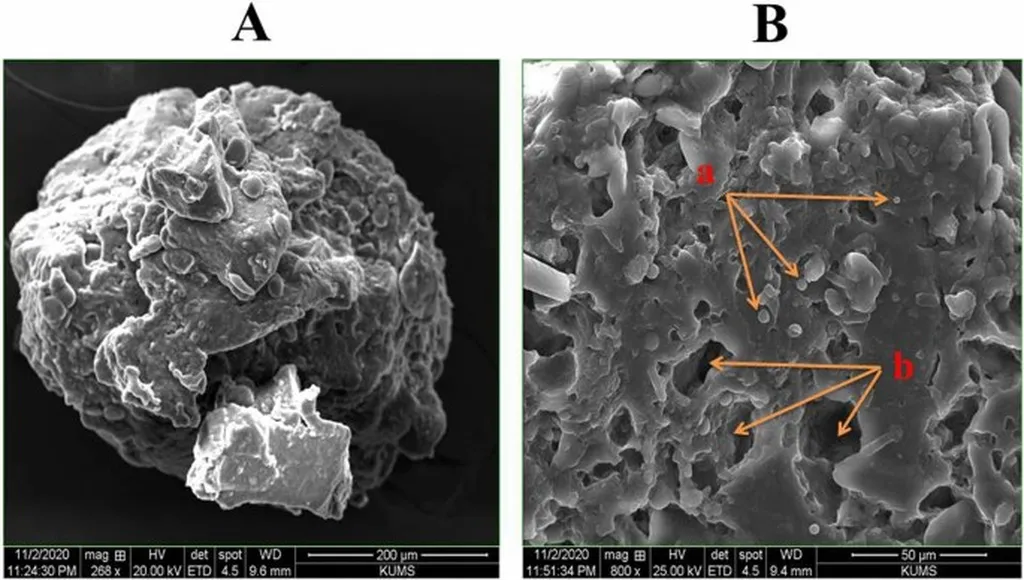In the heart of western Iran, a traditional dairy product called Tarkhineh—similar to what we might call “yogurt cheese” in English—has yielded a promising discovery for the world of probiotics and antimicrobial research. A team of scientists, led by Amir Kiani from the Regenerative Medicine Research Center (RMRC) at Kermanshah University of Medical Sciences, has isolated and characterized lactic acid bacteria (LAB) from Tarkhineh, uncovering their potential as powerful probiotics with significant antimicrobial activity against Candida albicans.
The study, published in *Scientific Reports*, screened 60 samples of Tarkhineh to isolate probiotic bacterial strains. Out of 20 isolated strains, five stood out due to their high survival rate under acidic and bile salt conditions, mimicking the harsh environment of the gastrointestinal tract. These strains—Ta12, Ta19, Ta37, Ta51, and Ta58—were further tested for their ability to survive in enzymatic conditions, with all five showing remarkable resilience.
“These strains not only survived but thrived in conditions that simulate the human digestive system,” Kiani explained. “This is a crucial step in confirming their potential as effective probiotics.”
The research revealed that all five strains exhibited significant antimicrobial activity against 12 common human pathogens, predominantly Gram-positive species. The inhibition zones ranged from 13.33 to 25.33 mm, indicating strong antimicrobial properties. Immunological tests confirmed the safety of these strains, as they showed negative hemolysis (γ-hemolysis), a critical factor in ensuring their suitability for human consumption.
Among the strains, Ta19 and Ta51 demonstrated superior properties, including higher susceptibility to common antibiotics, enhanced hydrophobicity, satisfactory cell adhesion, increased cholesterol uptake, and improved biofilm formation. These characteristics make them particularly promising for commercial applications in the probiotics and antimicrobial sectors.
“Strains Ta19 and Ta51 showed exceptional antifungal activity against Candida albicans,” Kiani noted. “This opens up new avenues for developing targeted treatments and preventive measures against fungal infections.”
The study also confirmed the bacteriocin (protein) nature of the effective extracts from these two strains, which could be harnessed for developing novel antimicrobial agents. Furthermore, a combination of 25% extract from strain Ta19 and 75% extract from strain Ta51 demonstrated superior antifungal properties compared to other formulations and a control strain of Lactiplantibacillus plantarum subsp. plantarum PTCC 1745, as well as the antibiotic fluconazole.
The identification of these strains through 16S rRNA sequencing revealed their classification as Lactobacillus delbrueckii, Lactiplantibacillus plantarum subsp. plantarum, Lactococcus lactis, Leuconostoc mesenteroides, and Lactobacillus johnsonii. This discovery paves the way for further research and commercial exploitation of these strains in the probiotics and antimicrobial industries.
The implications of this research are far-reaching. As the demand for natural and effective probiotics continues to grow, the identification of these strains offers a promising solution for enhancing gut health and combating pathogenic infections. The commercial potential is substantial, with applications ranging from functional foods and dietary supplements to pharmaceutical products.
“This research not only highlights the potential of traditional dairy products as a source of beneficial bacteria but also underscores the importance of exploring indigenous foods for novel probiotic strains,” Kiani added. “It’s a testament to the rich biodiversity that can be found in local traditions.”
As the scientific community continues to delve into the potential of lactic acid bacteria, the findings from this study could shape future developments in the field, offering new strategies for improving human health and well-being. The journey from Tarkhineh to the laboratory has unveiled a treasure trove of possibilities, setting the stage for innovative advancements in probiotics and antimicrobial research.

